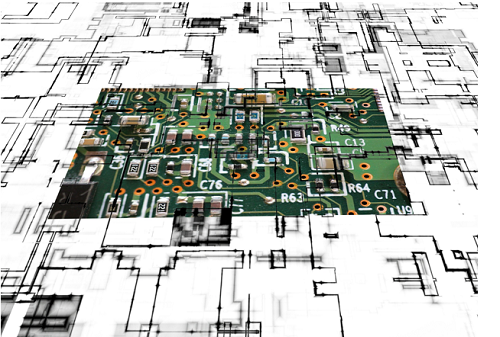
Image Source: Pixabay.
By Heather Hamilton, contributing writer
A team of researchers at the University of Sydney have stored light as sound for the first time ever by slowing digital information carried as light waves and transferring the data into sound waves in a microchip. The information is transferred from the optical to acoustic domain and then back again inside the chip and proves to be critical for the development of photonic integrated circuits, reports Phys.org.
The chip was made at the Australian National University’s Laser Physics Centre and the research was published in Nature Communications.
In areas where traditional electronics may encounter electromagnetic interference or use too much energy or generate too much heat, the chips fit in perfectly. Developed for use in telecommunications, optical fiber networks, and cloud computing data centers, the information in the chip in acoustic form travels at a velocity five orders of magnitude slower than in the optimal domain, explains Dr. Birgit Stiller, project supervisor. “It is like the difference between thunder and lightning,” she says. Science Alert reports that light-/photon-based computers have the potential to operate at 20 times the speed of your current laptop.
The data is then temporarily stored inside the chip, where it is managed for processing, retrieval, and eventually transmission as light waves. Light carries information well because it is fast, which works well for transporting data via fiber-optic cables over large distances.
In a press release, Moritz Merklein and Stiller, both researchers and authors on the project, discuss how they have shown a memory for digital information that can transfer between light and sound waves on a photonic microchip. “Building an acoustic buffer inside a chip improves our ability to control information by several orders of magnitude,” said Merklein. “Our system is not limited to a narrow bandwidth,” added Stiller. “So unlike previous systems, this allows us to store and retrieve information at multiple wavelengths simultaneously, vastly increasing the efficiency of the device.”
Data delivered by light allows for increased bandwidth, fast transfer, no heat associated with electronic resistance, and photon immunity to electromagnetic radiation interference. On the chip, data must actually be slowed down for processing. “For this to become a commercial reality, photonic data on the chip needs to be slowed down so that they can be processed, routed, stored, and accessed,” said Merklein. Author Benjamin Eggleton added, “This is an important step forward in the field of optical information processing as this concept fulfills all requirements for current- and future-generation optical communication systems.”
Sources: Phys.org,Nature Communications,Science Alert,Eureka Alert
Advertisement
Learn more about Electronic Products Magazine





